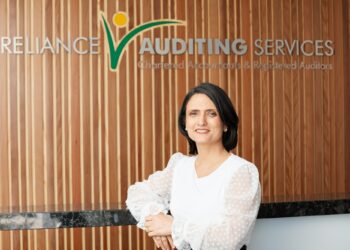Remember this old adage: There are three kinds of lies – lies, damned lies and statistics. Well, I was reminded of this saying when APRA and the ATO released the numbers about SMSFs during the previous financial year.
The APRA statistics, quarterly superannuation statistics to 31 March 2013, showed an SMSF sector growing strongly: assets increased $22 billion or 33.9 per cent of the total $68.4 billion increase in superannuation assets in this quarter, taking total SMSF assets to $496.2 billion or about 31.5 per cent of the total $1.58 trillion superannuation pool.
From SPAA’s perspective, two positives could be drawn from these numbers: despite warnings about SMSF trustees and their advisers being too cautious following the GFC, here was concrete evidence they had not missed the market upswing. The investment performance of the SMSF sector was on a par with or better than the APRA-regulated funds – retail, industry, public or corporate.
The figures also suggested people have not lost their appetite for taking responsibility for managing their own superannuation. In the wake of this evidence about the sector’s health, the SMSF naysayers were noticeable by their silence.
A few weeks later the ATO released some numbers showing a drop in the number of SMSFs established in the March 2013 quarter; only 5,820 funds were set up, compared with 9,863 SMSFs in the March 2012 quarter and 7,461 in 2011.
This time, the naysayers were out in force – a quarterly dip in the number of SMSF establishments was grounds for any number of doomsday scenarios about the health of the sector.
Forget the fact that the March quarter is typically soft before the numbers pick up again as people do their tax planning before June 30, and the fact that the percentage growth in SMSFs will inevitably slow as the numbers rise. No, it was all about the political instability and market volatility that was causing people to stay put in their APRA fund.
So, what is the true state of health of the SMSF sector? The statistical evidence – the drop in the number of funds established in the latest March quarter notwithstanding – draws a picture of consistent growth, whether it’s the number of funds, trustees or assets under management.
But statistics can never tell the full story. To actually get a comprehensive view of how the sector is travelling you need to look at the review of the superannuation system by Jeremy Cooper, who released his committee’s final report in July 2010. This report might be approaching its third birthday, but nothing has happened since to refute its findings. So what did Cooper say about SMSFs in his final report?
“The vast majority of submissions supported the view that the SMSF sector, with a few exceptions, generally works well. This view is shared by the Panel. The review process has generally confirmed that the SMSF sector is largely a successful and well functioning part of [the] superannuation system,” the report read.
“The Panel suspects that the most significant aspect of its work in the SMSF sector is that it has not recommended wide-ranging changes — a minimum SMSF asset size or specific trustee educational requirements, being two examples. The Panel’s SMSF recommendations are not dramatic and largely relate to compliance, audit, adviser competency and like measures. These changes are aimed at ensuring that this growing sector can continue to prosper in an enhanced environment.”
That’s a strong endorsement, especially when it is considered that Cooper, on his own admission, began this inquiry somewhat sceptical about SMSFs and whether they had a future role to play in Australia’s compulsory superannuation system. On the evidence he and his committee heard, they obviously decided they have, reaching the conclusion that this sector was performing well, both in terms of how the trustees took responsibility for their funds and the quality of the advice they were receiving from SMSF professionals.
There are a couple of other points that are worth making. SMSF critics often couch their “concerns” as to whether trustees have the capacity to handle their superannuation fund; this particularly relates to investment. Cooper begged to differ. Suggestions that the levels of SMSF trustee knowledge and that further education was required were politely rejected on the grounds that it would simply create artificial barriers to entry.
Indeed, Cooper and his panel were quite explicit in their view that SMSF trustees did not have to be experts in superannuation. Instead, they are expected to know where to find expert advice and how to evaluate it.
Cooper was also dismissive of recommendations about fund size; again, he saw it as a barrier to entry. “There has been a long running debate about whether there should be a minimum SMSF asset size, with many industry participants questioning whether an SMSF with $200,000 in assets could be cost-competitive with large APRA funds.
“The Panel does not believe there is a need to mandate a minimum SMSF asset size which would only act as an artificial barrier to entry; within the choice architecture model members have the right to choose,” the report said.
No lies, damned lies or statistics there.
Graeme Colley is SPAA’s director, technical and professional standards.


